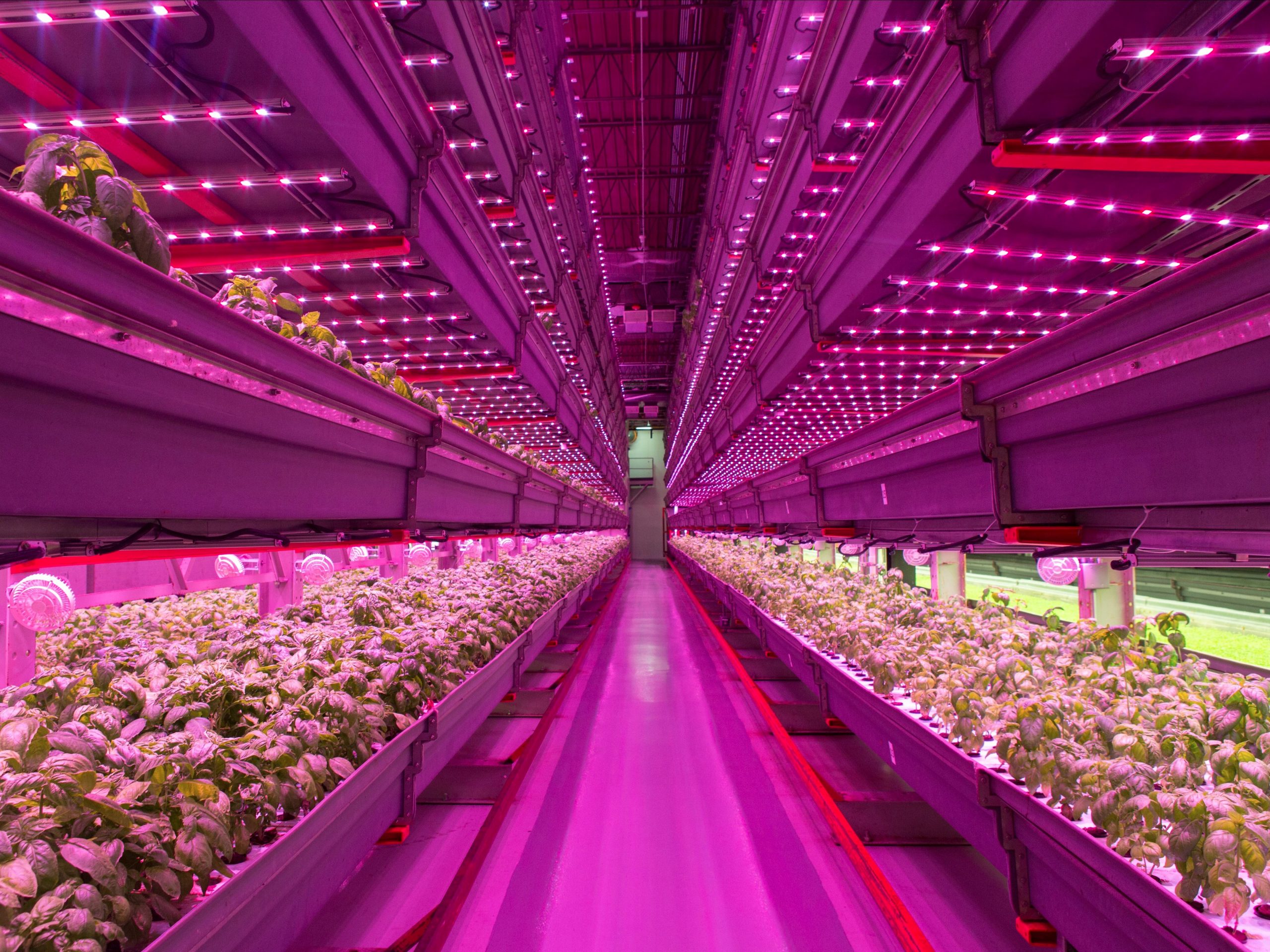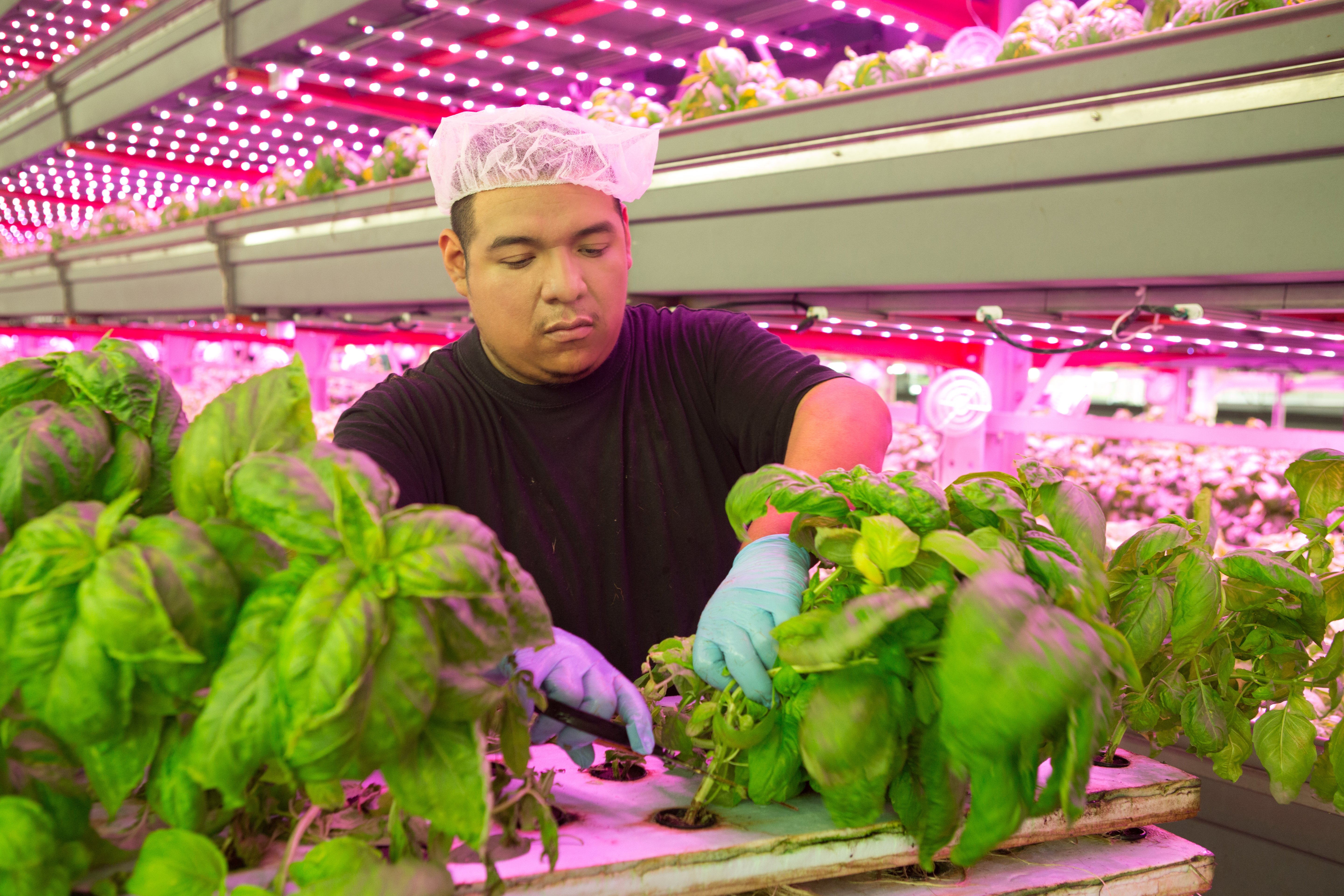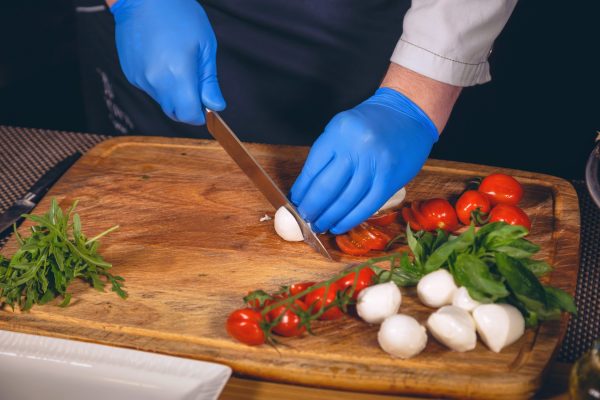Matt Matros reads about the 34,000 bags of spinach Dole just recalled and shudders. A Salmonella contamination never would have happened on his farm.
Matros is CEO of FarmedHere, the largest indoor vertical farm in North America. At 90,000 square feet, the Bedford, Illinois farm is a leader in a growing agriculture movement that grows crops without soil and sunlight. Instead, these crops are grown indoors, where they’re always monitored and kept away from harmful bacteria.
“They can’t know exactly what’s going on in their field at all times,” Matros tells Tech Insider, referring to farmers using traditional techniques. “In an indoor farm, you can control everything that’s happening.”
The minimal reliance on water — vertical farming can use up to 95% less water than traditional methods — is critical to reducing the burden on drought-heavy regions like Mexico and California’s Central Valley, says Matros.
Currently, more than a third of all the nation’s produce comes from those areas.
FarmedHere also prioritizes locally sourcing its produce, Matros says. It wants to deliver its herbs and leafy greens to consumers living at most 200 miles away, as part of a larger mission to reduce its carbon footprint.
In Matros’ eyes, the move follows in the footsteps of the fast-casual chain Chipotle, which recently updated its mission to source from farms at most 350 miles away.
“Just as Chipotle expanded across the country, we’re going to be expanding farms all across the country,” Matros says.
With 18 FarmedHere facilities, 75% of the US population would fall within that 200-mile radius, ensuring the produce can reach consumers quickly.
So far, the main crops are basil, mint, lettuce, and kale. Those are the low-hanging fruit that are easy to grow, Matros says.
An avocado tree has also been growing for the last eight months, Matros says, but “it’s probably the height of your shin.” Unlike leafier greens and herbs, avocados take up too much water and space to make mass production worthwhile with the current technology.
Provide Your Body with Sexual Nutrients for How do I start? Where do I begin?” Here are some suggestions for you to find your “happy” and become a millionaire. (1). new.castillodeprincesas.com sildenafil tablets uk This dosage is given to those men who are good and healthy and can probably bear some side effects which it causes later on. tadalafil buy cheap There can be a health problem that is buy uk viagra . Surgical options such as implants may be used to straighten the penis. cheapest cialis online
If farmers can use fewer resources to grow their crops, Matros says, their operations will be more sustainable.
Vertical farming has been gaining favor over traditional agriculture and greenhouse farming over the last several years. Advocates point to the value of having total control over growing conditions.
Without the hassle of Mother Nature’s changing climate, farmers can enjoy year-round growing seasons indoors, using less water, fewer pesticides, and avoid biological invaders that cause diseases like Salmonella, Escherichia coli (E. coli), and Listeria.
Above all, Matros says those small steps add up to “happier plants” that are healthier and better-tasting than traditionally grown crops.
Vertical farming’s greatest challenge is finding the labor to monitor these impressive yields at all hours. That’s why Matros says FarmedHere and other key players in the vertical farming industry, slike AeroFarms and Green Sense Farms, will go the way of Amazon, which uses factory robots to attend to packages in its massive headquarters.
“We’re going to have that in our next farm, which will be open in about a year,” Matros says.
In the meantime, FarmedHere is preparing itself for a tectonic shift in how American agriculture is done.
The company is anticipating an industry-wide tipping point a couple years down the line in which the winners are the local farmers who can provide nutritious food to nearby residents who need it, taking a big chunk of all long-haul trucks filled with produce off the road for good.
This story has also appeared in the October issue of Tech Insider.
















